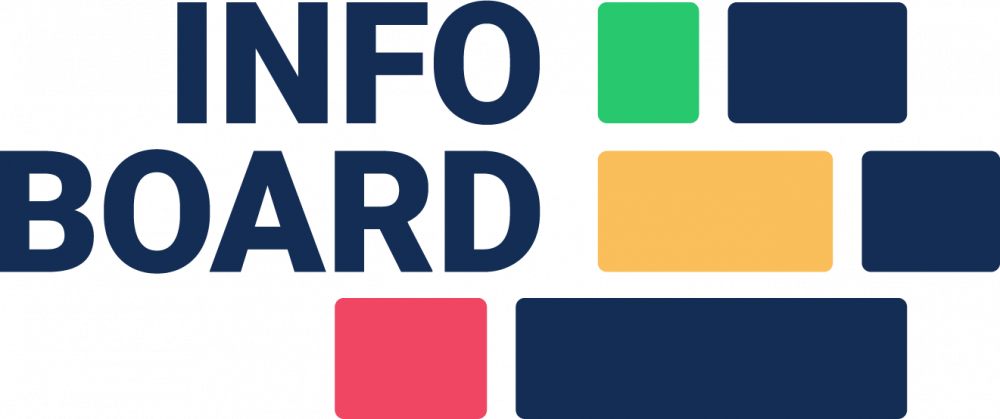What is the core of business planning?
You have to make the best decisions for an uncertain future. To be able to make realistic predictions. How we would wish for that! Would we all not make optimal decisions if we knew what was going to happen in the near future. Decisions would then no longer be a stab in the dark.
It all comes back to the question: What is to be done? How should it be done? When should it be done? Who should do it, and where?
All questions can be answered by the planning board.
Through pictoral, schematic images, the sensory abilities of human intelligence are stimulated, which are faster than the logical processing of terms (words). Processing then takes place holistically and not in logical chains.
Those who use infoBoard, use technology to make good decisions for production processes today, to see their effects immediately, and to communicate these effects in the face of an uncertain future.
In the decision-making process, the imagination is stimulated, allowing you to find new solutions to your problems. This allows us to explore new methods and find even better solutions.
Better solutions reduce opportunity costs as well as operating costs, avoiding or even improving peaks, and achieving an even and consistent utilisation of existing resources – possibly increasing output..
This is the main reason why infoBoard is mainly found in growing company, who cannot effectively manage their organic growth without infoBoard.That is why you are giving away market opportunities, and only work effectively enough, when you plan your production through Excel.
Why are decisions important?
How do you prepare decisions? Why do you prepare decisions? You are respondng to a new situation, and should go through a decision-making process such as this:
– A timely detection of problems
– Analysis of these problems
– Formulate solutions
What do customers say?
A customer reported the following after using infoBoard for four months (translated from German):
“We actually only wanted infoBoard temporarily to improve our growth phase. We’ve been implementing an ERP system fora year, but now we will definitely be keeping infoBoard!
“With sixty employees now, we have been able to extend our planning from one week to several weeks. This means that we avoid peaks in machine time and now work more evenly. The availability of information (what is in progress, when it will be finished etc.) is available immediately without any effort. For the first time, the sales department is able to see the progress of production and is ergo more effective and targeted in its efforts.
Through feedback reports on infoBoard WebViews, group leaders can finally assessand estimate: where are we?”
The customer took a heuristic approach with trial and error and, after a short time, has created three approaches to a solution and has more than achieved his target. (Note that this three month detour in setting up production can be avoided by not declining the infoBoard Training Workshops.
The connection to the new ERP system is now planned.
What do prospective customers with Excel planning say?
A prospective customer in plant manufacturing reported the following to me (translated from German):
“We have no ERP system, the project leaders calculate and describes the tasks with Excel, but have no resource responsibilities. Our warehouse should be shut down, we already buy 80% more than what the workshop (through the leader) planned. Orders from other areas are, however, always coming into the workshop and the effects (delays on our projects) is inestimable.
“Additionally, part of our team is on construction sites for assembly or service work. Production is therefore not plannable.”
The company began to look around on the market. Yes, infoBoard is not an ERP system! infoBoard simplifies the jobs to duration bars on a resource row, and allows for scheduling and capacity planning.
Admittedly, if you doesn’t know what you should do (task plans, sequencing of stages), then you also cannot make a schedule plan.
But believe me, every enterprise has established business operations, and the creation of products and services comes from good practice – from experience.
What do you have to decide in this situation? Market view, firstly, and then a complete solution? That’s unrealistic.. My suggestion is more like the Pareto principle: roughly 80% of the goals for planned production can be quickly implemented and tracked thanks to a 20% investment of time and money.
Experience gained in this way is inestimably important for the later implementation of an ERP system.
Increase the quality of your decisions!
The infoBoard planning board is THE tool for every responsible decision-maker in the company’s business operations.
Using infoBoard as a tool for production planning means using technology, using Excel to plan production doesn’t.
infoBoard also facilitates a heuristic approach, eg. trial and error. Work years of experience into your business model!
Never stop learning
If you want to learn more about better planning, as well as the business processes happening in your company, I would suggest that you search for the following terms in Wikipedia. The terms provide a theoretical background to your practical problems.
- complexity
- decision theory
- scheduling
- production planning
- emergence
- Holism (“the whole is more than the sum of its parts)
- matrix
Which tools and methods to you use to make better decisions?





